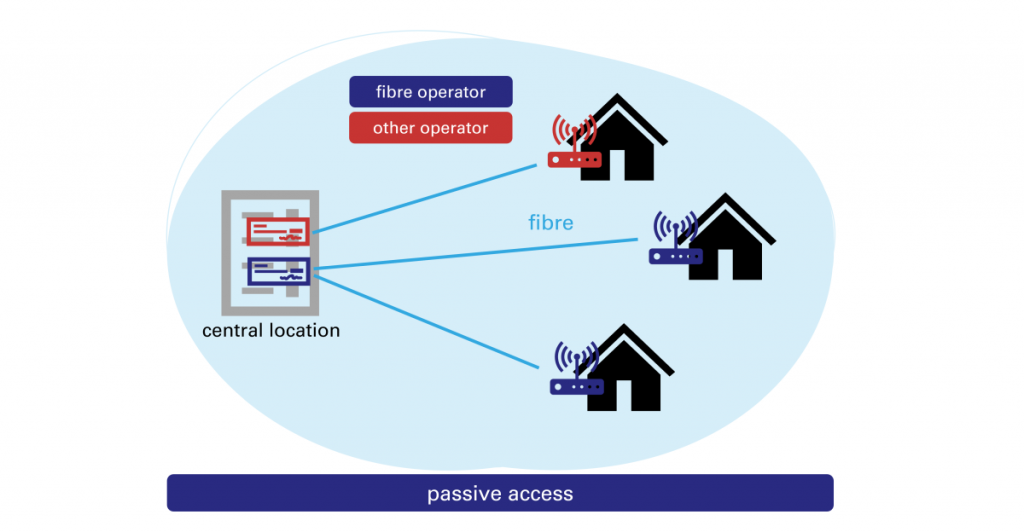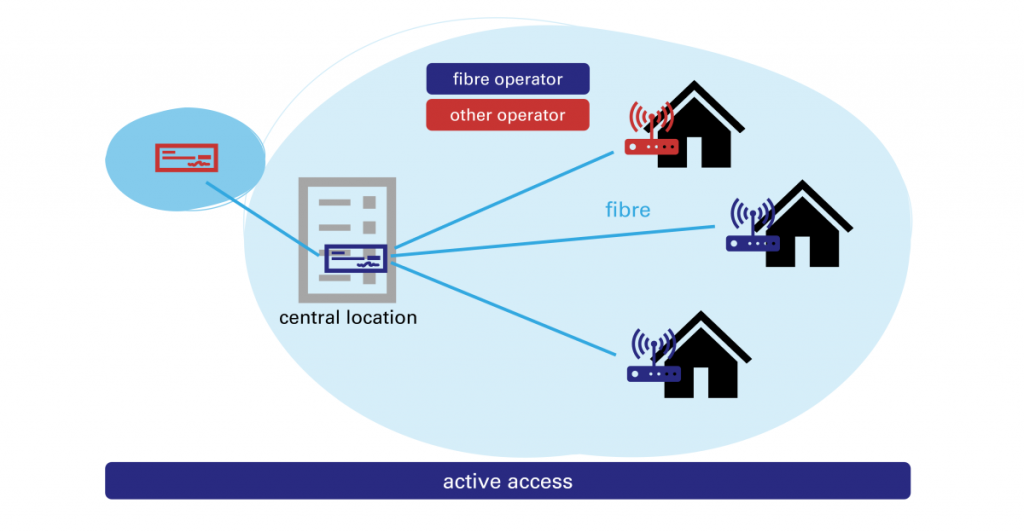For a customer it may be interesting to have a choice between various providers for his broadband connection. An optical fibre network can be shared between different operators: to that end the operator who rolls out the optical fibre network has to grant other operators access to his network. Sometimes he is forced to do so (by the BIPT for instance), but the operator can also voluntarily conclude commercial contracts with other operators.
It is important to note that the kind of optical fibre network often also has an impact on the kind of access, as mentioned already on the page describing the different options of fibre infrastructure.
There are two kinds of access:

Passive access means that another operator has direct access to the fibre going to the end-customer and that he installs his own equipment. This kind of access offers the other operator the most freedom and flexibility to offer his own services. This type of access is only possible in a point-to-point optical fibre network, because only in that case each customer has his own fibre.

Active access means that another operator has access to a service over fibre, for which also the fibre operator’s equipment is used. Access to such a service is often provided at a central point (where the various customers’ traffic is collected) instead of the optical fibre network’s distribution point. As a consequence this can be an advantage for smaller operators. The downside is that this kind of access allows less freedom and flexibility to the other operators as to choosing which services they offer the end-customer and the equipment used: they depend on what the optical fibre operator offers. Active access is possible on any type of optical fibre network.